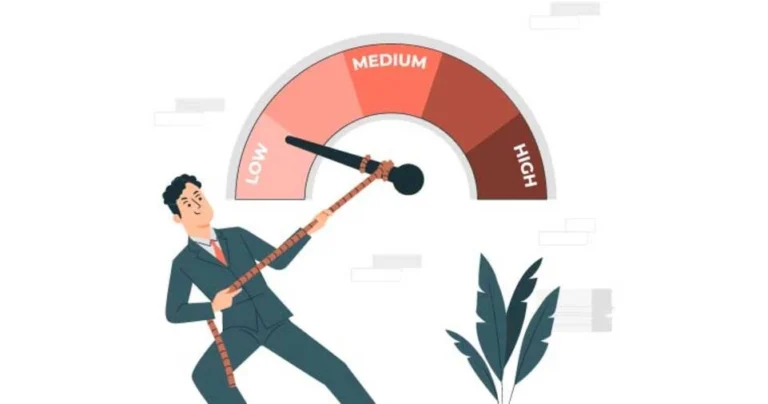Investing is a crucial step toward financial growth, but for beginners, navigating the investment landscape can be overwhelming.
Many new investors worry about the risks involved, fearing potential losses. However, low-risk investments offer a safe way to grow wealth while minimizing financial exposure.
Understanding these investments is key to making informed decisions and achieving financial security.
Low-risk investments typically provide steady, predictable returns without excessive market volatility.
They are ideal for individuals looking to preserve their capital while earning modest gains over time.
Whether you’re saving for retirement, an emergency fund, or future expenses, low-risk investments can be a valuable part of your portfolio.
Unlike high-risk investments that may provide larger gains but come with volatility, low-risk investments are generally stable, making them a preferred choice for those prioritizing financial security.
In this guide, we will explore various low-risk investment options, explain how to assess risk tolerance, and offer strategies for diversifying your portfolio.
We will also discuss how to avoid common investment pitfalls and maximize returns while keeping risk at a minimum.
By the end of this article, you will have a clear understanding of how to safely invest your money and build a financially secure future.
Understanding Risk in Investments
What is Investment Risk?
Investment risk refers to the possibility of losing money on an investment due to market fluctuations, economic downturns, or company failures.
Different investments carry varying levels of risk, from virtually risk-free government bonds to highly volatile stocks and cryptocurrencies.
Types of Investment Risks
- Market Risk: The risk of losing money due to market fluctuations.
- Inflation Risk: The potential for inflation to erode purchasing power.
- Liquidity Risk: Difficulty in selling an asset without losing value.
- Credit Risk: The risk of borrowers defaulting on debt obligations.
- Interest Rate Risk: The effect of changing interest rates on investments.
- Political Risk: Government policies and regulations affecting investment stability.
- Currency Risk: Fluctuations in exchange rates affecting foreign investments.
Understanding these risks helps investors make informed decisions, ensuring their investments align with their financial goals and risk tolerance.
Diversification and proper research can mitigate many of these risks, making investments safer.
How to Assess Your Risk Tolerance
What is Risk Tolerance?
Risk tolerance is the degree of variability in investment returns an investor is willing to withstand.
It is influenced by factors such as age, income, financial goals, and investment experience.
Factors Determining Risk Tolerance
- Investment Goals: Long-term goals like retirement allow for higher risk, while short-term goals require safer investments.
- Time Horizon: A longer investment period provides more time to recover from market fluctuations.
- Financial Situation: A stable income and emergency fund enable investors to take on more risk.
- Emotional Comfort: Some investors prefer steady returns over potential high gains with high volatility.
- Investment Knowledge: The more knowledgeable an investor is, the better they can manage risks.
- Diversification Strategy: A well-balanced portfolio reduces overall risk exposure.
Beginners should start with low-risk investments to build confidence before gradually increasing exposure to riskier assets.
Best Low-Risk Investment Options for Beginners

High-Yield Savings Accounts
A high-yield savings account is one of the safest investment options. It offers a higher interest rate than traditional savings accounts and allows easy access to funds.
- Pros: Safe, FDIC-insured, and highly liquid.
- Cons: Lower returns compared to other investments.
- Best For: Emergency funds and short-term savings.
Certificates of Deposit (CDs)
CDs are fixed-term deposits with banks that offer guaranteed returns over a specified period.
- Pros: Fixed returns, FDIC-insured.
- Cons: Limited access to funds until maturity.
- Best For: Investors who don’t need immediate access to their money.
Treasury Bonds & Bills
Government-issued bonds are among the safest investments, providing guaranteed interest payments.
- Pros: Virtually risk-free, backed by the government.
- Cons: Lower returns compared to stocks.
- Best For: Conservative investors looking for stability.
Money Market Funds
These funds invest in short-term, high-quality debt securities, offering a balance between safety and return.
- Pros: Low volatility, easy access to funds.
- Cons: Slightly lower returns than stocks.
- Best For: Investors seeking capital preservation.
Dividend Stocks
Dividend-paying stocks provide regular income while maintaining potential for capital growth.
- Pros: Steady income, potential for price appreciation.
- Cons: Market fluctuations can impact stock value.
- Best For: Investors comfortable with moderate risk.
Index Funds & ETFs
Index funds and ETFs offer diversified exposure to a broad range of assets, reducing risk.
- Pros: Low cost, diversification, historically stable returns.
- Cons: Subject to market fluctuations.
- Best For: Long-term investors seeking stable returns.
Real Estate Investment Trusts (REITs)
REITs allow investors to participate in real estate without owning physical property.
- Pros: Passive income, portfolio diversification.
- Cons: Market-dependent returns.
- Best For: Investors looking for consistent income streams.
Annuities
Annuities provide guaranteed income for life or a specific period, making them a safe investment option.
- Pros: Fixed payouts, low risk.
- Cons: Limited liquidity.
- Best For: Retirees and individuals seeking stable income.
How to Diversify Your Investment Portfolio
Diversification reduces risk by spreading investments across multiple asset classes.
Here’s how to do it effectively:
- Mix Asset Classes: Combine stocks, bonds, and real estate.
- Invest in Different Sectors: Avoid over-concentration in one industry.
- Use Index Funds: Gain broad market exposure.
- Consider International Investments: Reduce domestic market dependency.
- Rebalance Regularly: Adjust allocations based on market conditions.
Common Investment Mistakes to Avoid
- Chasing High Returns: Avoid investments promising unrealistic gains.
- Ignoring Fees & Expenses: High fees can eat into returns.
- Not Researching Investments: Always analyze before investing.
- Failing to Diversify: Overexposure to one asset increases risk.
- Emotional Investing: Avoid making impulsive decisions based on market fluctuations.
- Overlooking Tax Implications: Consider taxes on returns to maximize profits.
- Ignoring Inflation Risks: Choose investments that outpace inflation.
ALSO READ: How to Use Smart Contracts for Your Business
Conclusion
Identifying low-risk investments is essential for beginners looking to build wealth without excessive risk.
By understanding risk tolerance, choosing stable investments like high-yield savings accounts, treasury bonds, and dividend stocks, and diversifying effectively, investors can secure steady returns with minimal risk.
Investing wisely requires patience, research, and a strategic approach.
By avoiding common mistakes and maintaining a well-balanced portfolio, beginners can achieve financial growth while protecting their hard-earned money.
Whether saving for the future or preparing for retirement, low-risk investments provide a solid foundation for long-term financial success.











